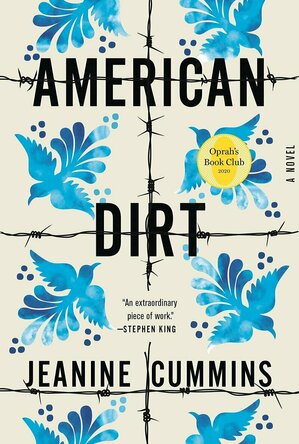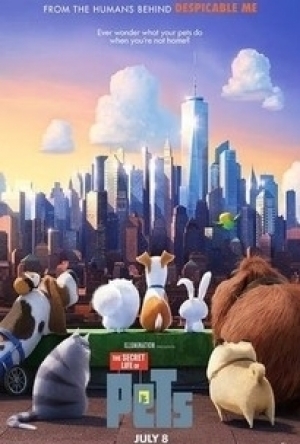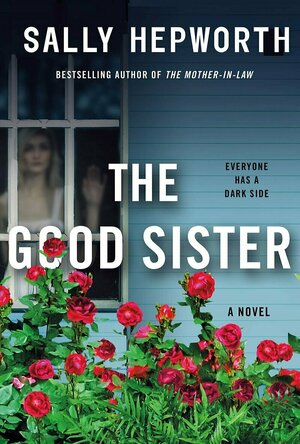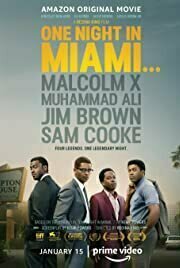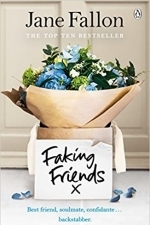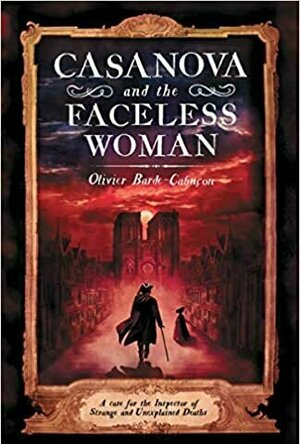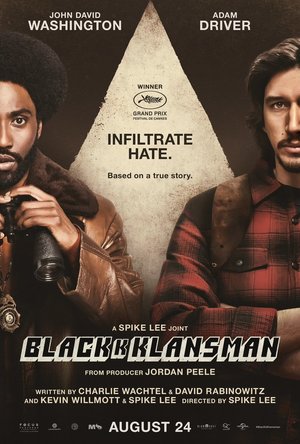Search
Search results
Gareth von Kallenbach (980 KP) rated the PC version of Terminator: Resistance in Video Games
Dec 15, 2019
Reef Entertainment and Teyon are to be congratulated for bringing one of the best Terminator games ever to fans.
The game casts players as a member of the Resistance in the post-apocalypse L.A. area who must content with a nightmare world of cybernetic killers.
Playing from a First Person Perspective; players must explore, salvage, construct, and survive a series of missions ranging from recon, salvage, exploration and others.
Players will find themselves in the company of civilians looking to simply survive and thanks to a branching dialogue option; players will also have some control over whom they interact with and the direction of the story as well as how those characters will view and interact with you in the future.
Naturally players expect some action in a Terminator game and the game delivers plenty of it. Starting with pistols and rifles; players can take down Drones and Silverfish; but the larger Terminator units require something more advanced. When you finally get a Phased Plasma Rifle in the 40 Watt Range; it is a true delight to mow down the T-800 and other units but you will quickly learn that they can and do take a great deal of punishment before they go down and that your ammunition supply is not infinite.
As such; players often have to resort to stealth options and I can think of missions through a hospital and decimated town where the enemies were abundant and required some real tactics to evade.
The story also offers plenty of side missions for players looking for an optional challenge as well. I especially liked the references to people and events that were hinted at or mentioned in the film series as it really added an extra thrill to the gameplay.
The graphics are solid but not groundbreaking but capture the world and characters well which helps add to the immersion in the game.
I would have liked to have seen a multiplayer option as it would be great fun to do a Co-Op mission with other players where some would have to distract and engage enemies while others used a Stealth option.
Regardless; Terminator: Resistance is a solid and enjoyable game which provides gamers with a solid and enjoyable Terminator experience.
4 stars out of 5.
The game casts players as a member of the Resistance in the post-apocalypse L.A. area who must content with a nightmare world of cybernetic killers.
Playing from a First Person Perspective; players must explore, salvage, construct, and survive a series of missions ranging from recon, salvage, exploration and others.
Players will find themselves in the company of civilians looking to simply survive and thanks to a branching dialogue option; players will also have some control over whom they interact with and the direction of the story as well as how those characters will view and interact with you in the future.
Naturally players expect some action in a Terminator game and the game delivers plenty of it. Starting with pistols and rifles; players can take down Drones and Silverfish; but the larger Terminator units require something more advanced. When you finally get a Phased Plasma Rifle in the 40 Watt Range; it is a true delight to mow down the T-800 and other units but you will quickly learn that they can and do take a great deal of punishment before they go down and that your ammunition supply is not infinite.
As such; players often have to resort to stealth options and I can think of missions through a hospital and decimated town where the enemies were abundant and required some real tactics to evade.
The story also offers plenty of side missions for players looking for an optional challenge as well. I especially liked the references to people and events that were hinted at or mentioned in the film series as it really added an extra thrill to the gameplay.
The graphics are solid but not groundbreaking but capture the world and characters well which helps add to the immersion in the game.
I would have liked to have seen a multiplayer option as it would be great fun to do a Co-Op mission with other players where some would have to distract and engage enemies while others used a Stealth option.
Regardless; Terminator: Resistance is a solid and enjoyable game which provides gamers with a solid and enjoyable Terminator experience.
4 stars out of 5.
Kristy H (1252 KP) rated American Dirt in Books
Apr 9, 2020
So I put this book on hold at the library before it exploded into controversy and then it was the last book I was allowed to check out before our library closed down due to the pandemic. I can't tell if it was a great book to read in a pandemic (people with lives even worse on a daily basis) or if it just made my anxiety even worse! At this point, I'm just going to give a short review and try not to dip into the whole uproar over the book, but I do encourage you to read up on it and to read some #ownvoices authors, as well.
Lydia Perez lives in Acapulco with her husband, a journalist, and their eight-year-old son, Luca. She runs a bookstore, and one day someone comes in and buys several books that Lydia stocks solely because they are her favorites, not because she expects them to sell. They strike up a friendship and Javier returns frequently to her bookstore. It's only later that Lydia realizes that he is the leader of the newest, powerful drug cartel in town--the one that is ruining Acapulco. And the same jefe about whom her husband is writing an explosive journalistic profile. Once it's published, Lydia and Luca must flee Acapulco, becoming migrants overnight. They are heading to the United States, the one place Javier can't hurt them. But can they survive the dangerous journey?
This is an eye-opening and sad book. It's certainly heart-rendering and gives you such empathy for what Lydia and Luca must go through. For me, it was Luca who made this book. He is an endearing and indomitable character, and I loved him dearly. Cummins is a strong writer, and her characters certainly do come to life. I did find the story a little slow; it took it a while to really get going. It was also incredibly stressful--no surprise there--so I was on edge the entire time I was reading. However, I found myself rooting for Lydia and Luca as if they were true, actual people and for that, I applaud Cummins, no matter her motivations for writing this book. There's also so much about this story that broke my heart and it made me even further aware of so many deplorable things. The world is a terrible and scary place.
Lydia Perez lives in Acapulco with her husband, a journalist, and their eight-year-old son, Luca. She runs a bookstore, and one day someone comes in and buys several books that Lydia stocks solely because they are her favorites, not because she expects them to sell. They strike up a friendship and Javier returns frequently to her bookstore. It's only later that Lydia realizes that he is the leader of the newest, powerful drug cartel in town--the one that is ruining Acapulco. And the same jefe about whom her husband is writing an explosive journalistic profile. Once it's published, Lydia and Luca must flee Acapulco, becoming migrants overnight. They are heading to the United States, the one place Javier can't hurt them. But can they survive the dangerous journey?
This is an eye-opening and sad book. It's certainly heart-rendering and gives you such empathy for what Lydia and Luca must go through. For me, it was Luca who made this book. He is an endearing and indomitable character, and I loved him dearly. Cummins is a strong writer, and her characters certainly do come to life. I did find the story a little slow; it took it a while to really get going. It was also incredibly stressful--no surprise there--so I was on edge the entire time I was reading. However, I found myself rooting for Lydia and Luca as if they were true, actual people and for that, I applaud Cummins, no matter her motivations for writing this book. There's also so much about this story that broke my heart and it made me even further aware of so many deplorable things. The world is a terrible and scary place.
Gareth von Kallenbach (980 KP) rated The Secret Life of Pets (2016) in Movies
Aug 6, 2019
Every wonder what your pets do while you’re away? The premise of this film is the social lives pets lead while their owners are out of the picture. From throwing parties, to visiting each other’s apartments, and utilizing all the household tools to create their own lap of luxury lifestyle.
From the studio that brought you those lovable Minions, the Secret Life of Pets is Illumination Entertainment’s pet version of Disney’s Toy Story. The film opens up with Max (Louis CK), a cute, funny loving, gregarious little terrier with an extreme attachment to his owner, Katie (Ellie Kemper). One day, Katie brings home a new “brother” to keep Max company. Duke (Eric Stonestreet), a scruffy, friendly, shaggy dog that competes with Max for Katie’s affection. The competition gets so out of hand that both Max and Duke end up lost in the streets of New York City and without their only form of identification, their collars. Now, they are on the run from the dogcatchers that want to take them to the Pound. They manage to make their way to the sewers and befriend a group of rebel castaway pets whose mission is to destroy all the pampered pets and their owners. Fortunately for Max, his pet friends band together to try to find Max and Duke and help bring them home.
Despite the similar storyline tone as Toy Story, this movie definitely stands on its own. Albeit, the emotional tones were not as poignant. Even though Max seemed to be the primary character in the movie, each individual character stood out on their own. Gidget (Jenny Slate), the feisty Pomeranian who will stop at nothing to save the Max, her true love. Snowball (Kevin Hart), the wise cracking leader of the rebel animal gang. You would have never thought so much hilarity and animosity could come from such a cute little bunny.
Visually, Pets gives us a great animal’s perspective into what it would be like to wander the city as a pet. It took us on an adventure through the not only between the city skyscrapers, the adventure continued through the sewers, and even the Hudson River.
There is enough in this movie to keep parents entertained, kiddos laughing, and it will definitely bring you closer to your own pet!
From the studio that brought you those lovable Minions, the Secret Life of Pets is Illumination Entertainment’s pet version of Disney’s Toy Story. The film opens up with Max (Louis CK), a cute, funny loving, gregarious little terrier with an extreme attachment to his owner, Katie (Ellie Kemper). One day, Katie brings home a new “brother” to keep Max company. Duke (Eric Stonestreet), a scruffy, friendly, shaggy dog that competes with Max for Katie’s affection. The competition gets so out of hand that both Max and Duke end up lost in the streets of New York City and without their only form of identification, their collars. Now, they are on the run from the dogcatchers that want to take them to the Pound. They manage to make their way to the sewers and befriend a group of rebel castaway pets whose mission is to destroy all the pampered pets and their owners. Fortunately for Max, his pet friends band together to try to find Max and Duke and help bring them home.
Despite the similar storyline tone as Toy Story, this movie definitely stands on its own. Albeit, the emotional tones were not as poignant. Even though Max seemed to be the primary character in the movie, each individual character stood out on their own. Gidget (Jenny Slate), the feisty Pomeranian who will stop at nothing to save the Max, her true love. Snowball (Kevin Hart), the wise cracking leader of the rebel animal gang. You would have never thought so much hilarity and animosity could come from such a cute little bunny.
Visually, Pets gives us a great animal’s perspective into what it would be like to wander the city as a pet. It took us on an adventure through the not only between the city skyscrapers, the adventure continued through the sewers, and even the Hudson River.
There is enough in this movie to keep parents entertained, kiddos laughing, and it will definitely bring you closer to your own pet!

Reading Comprehension Earth Science for First Grade and Second Grade Free
Education and Book
App
Reading Comprehension Earth Science for First Grade and Second Grade has twenty stories about the...

Earth Science Reading Comprehension for First Grade and Second Grade
Education and Games
App
Reading Comprehension Earth Science for First Grade and Second Grade has twenty stories about the...
Kristy H (1252 KP) rated The Good Sister in Books
Apr 15, 2021
A predictable yet oddly thrilling read
Fern and Rose are extremely close sisters and incredibly dependent on one other. Rose has always been the responsible one and Fern, with her sensory-processing issues, the one people look at a bit oddly. Their mother was abusive, scarring Rose, who saw through to her true nature. Fern, who always looks to the good side of people, remembers her more fondly. But Rose has always protected her sister, especially since, as children, Fern did something horrible. Rose has faithfully kept her sister's secret, even though both girls wonder if it made Fern a terrible person. Now Rose and her husband are having trouble conceiving. Fern realizes she could finally do something for Rose: give her a child. However, Rose worries that Fern could make some disastrous choices if pregnant, just as she did so many years ago.
"Most people think of me as Fern's protector. But the truth is, in her own funny way, she's always been mine."
This is an excellent book in terms of the page-turner element. I was madly flipping the pages. It is especially remarkable because the story was actually fairly predictable. I kept waiting for some big twist, but I felt the plot was pretty well telegraphed from the beginning.
What kept me spellbound was the characters, particularly Fern. There was just something about her--you couldn't help but become attached. The cast here is small: the sisters, Rose's husband, Fern's acquaintance Wally, but they are quite well-drawn. Hepworth does a fantastic job with the two sisters, both depicting their childhood and then their current state, as Fern becomes determined to do something for Rose, her long-time protector, and Rose struggles with what Fern's choice means.
It's best to go into this one blind. To me, the story felt pretty straightforward and nothing really surprising happened, but it was still well-written and exciting. Yes, I would have loved a great twist or two to push this thriller from good into great territory. I still think it's worth a read, though, especially if you don't read a ton of mysteries and are more likely to be surprised. The relationship and dynamic between Fern and Rose is really worth a read by itself. 3 stars.
"Most people think of me as Fern's protector. But the truth is, in her own funny way, she's always been mine."
This is an excellent book in terms of the page-turner element. I was madly flipping the pages. It is especially remarkable because the story was actually fairly predictable. I kept waiting for some big twist, but I felt the plot was pretty well telegraphed from the beginning.
What kept me spellbound was the characters, particularly Fern. There was just something about her--you couldn't help but become attached. The cast here is small: the sisters, Rose's husband, Fern's acquaintance Wally, but they are quite well-drawn. Hepworth does a fantastic job with the two sisters, both depicting their childhood and then their current state, as Fern becomes determined to do something for Rose, her long-time protector, and Rose struggles with what Fern's choice means.
It's best to go into this one blind. To me, the story felt pretty straightforward and nothing really surprising happened, but it was still well-written and exciting. Yes, I would have loved a great twist or two to push this thriller from good into great territory. I still think it's worth a read, though, especially if you don't read a ton of mysteries and are more likely to be surprised. The relationship and dynamic between Fern and Rose is really worth a read by itself. 3 stars.
BankofMarquis (1832 KP) rated One Night in Miami (2020) in Movies
Apr 15, 2021
Keeps the audience at arms length
The issue when adapting a stage play to the screen is that, often times, the subject matter and style of the script does not lend itself to being “opened up”, what is powerful when sitting in a theater with the actors performing the piece in front of you can often times be seen as “flat” when it jumps to the screen.
Such is the case with ONE NIGHT IN MIAMI the Major Motion Picture Directorial debut of Oscar Winning Actress Regina King and based on the stage play by Kemp Powers. This film/play fictionalizes the true story of 4 powerful African American legends that meet up in a hotel room, one night in Miami.
And…this film feels like 4 people sitting in a hotel room talking - and that’s the problem with it. What should be powerful dialogue (and, I’m sure, IS powerful when seen live on stage) just doesn’t translate well enough on the screen, so the film just sits there demanding we pay attention, while not inviting us in to do so.
Since this is a story about 4 people sitting around talking, the acting needs to take center stage and hold our attention and, quite frankly, it just does not. Eli Goree as Cassius Clay, Aldis Hodge as Jim Brown and Leslie Odom, Jr. as Sam Cook are all “fine” in their roles, but they don’t rise above the script and direction. Odom gets an Oscar nod for his turn in this film, but I have to think that, maybe, it is as much for his turn in HAMILTON as it is in this film.
Only Kingsley Ben-Adir as Malcolm X shows a spark and draws an emotional response in this film and that might not be fair to the other actors for he has the flashier role with the most speeches.
The Direction by King and the Script by Kemp Powers (based on his stage play) has some moments, but never draws the audience in. It keeps everyone at arms length and doesn’t touch the soul.
The subject matter in this film is an important one, and depicts a pivotal time in American History, but other films do a better job of driving that point home by inviting the audience into the conversation.
Letter Grade: B-
6 stars (out of 10) and you can take that to the Bank(ofMarquis)
Such is the case with ONE NIGHT IN MIAMI the Major Motion Picture Directorial debut of Oscar Winning Actress Regina King and based on the stage play by Kemp Powers. This film/play fictionalizes the true story of 4 powerful African American legends that meet up in a hotel room, one night in Miami.
And…this film feels like 4 people sitting in a hotel room talking - and that’s the problem with it. What should be powerful dialogue (and, I’m sure, IS powerful when seen live on stage) just doesn’t translate well enough on the screen, so the film just sits there demanding we pay attention, while not inviting us in to do so.
Since this is a story about 4 people sitting around talking, the acting needs to take center stage and hold our attention and, quite frankly, it just does not. Eli Goree as Cassius Clay, Aldis Hodge as Jim Brown and Leslie Odom, Jr. as Sam Cook are all “fine” in their roles, but they don’t rise above the script and direction. Odom gets an Oscar nod for his turn in this film, but I have to think that, maybe, it is as much for his turn in HAMILTON as it is in this film.
Only Kingsley Ben-Adir as Malcolm X shows a spark and draws an emotional response in this film and that might not be fair to the other actors for he has the flashier role with the most speeches.
The Direction by King and the Script by Kemp Powers (based on his stage play) has some moments, but never draws the audience in. It keeps everyone at arms length and doesn’t touch the soul.
The subject matter in this film is an important one, and depicts a pivotal time in American History, but other films do a better job of driving that point home by inviting the audience into the conversation.
Letter Grade: B-
6 stars (out of 10) and you can take that to the Bank(ofMarquis)
BookInspector (124 KP) rated Faking Friends in Books
Sep 24, 2020
The main characters in this novel are Amy and Melissa, two best friends who become worst enemies. This book was a real emotional roller coaster for me: I was laughing, getting angry, feeling pity and upset throughout this book. And all that was caused by the characters which were chosen for this book. I really liked Amy as a character, I think she was charming, very believable and relatable in some way. I absolutely could not stand Melissa though, I think she is an absolute lowlife who is a disgrace to womankind. Everything about her pissed me off, EVERYTHING! Jack and Simon in this book were not better as well, they were just plain stupid. But that was what made this book so indulging. The variety of characters and their unbelievably silly actions somehow made it really entertaining.
The plot of this book really hooked me, the constant drama, action, twists and turns didn’t let me sleep till 4 am in the morning. I just had to find out how it will end. I really appreciate that author used different perspectives in this book, it made it much more gripping and interesting, and it did allow to understand the characters way better. Another thing which I found really cool was the jumps between the past and present, it made the whole story richer and explained their friendship’s nuances to the reader. I really enjoyed all Fallon’s personal experience such as: movie industry and how it works, acting and it’s struggles, general knowledge of London (places, student life, renting options, shops etc.) It was really enlightening to me and I do feel sympathy for all the actors out there.
In this book Jane Fallon stayed true to her writing style, offering multiple perspectives, suspense, interesting topics and absolutely stunning writing itself. The language used was easy to understand, however, there were some swear words. The chapters were not very long, and it kept me going, as I really wanted to find out what will happen next. I really liked the ending of this book, I think it rounded up the story very nicely and left me satisfied. So to conclude, I absolutely loved this book, it gave me everything I need in good Chick – lit book, it has different types of characters, amusing and absorbing plot and interesting topics, and I do strongly recommend this novel. Enjoy 🙂
The plot of this book really hooked me, the constant drama, action, twists and turns didn’t let me sleep till 4 am in the morning. I just had to find out how it will end. I really appreciate that author used different perspectives in this book, it made it much more gripping and interesting, and it did allow to understand the characters way better. Another thing which I found really cool was the jumps between the past and present, it made the whole story richer and explained their friendship’s nuances to the reader. I really enjoyed all Fallon’s personal experience such as: movie industry and how it works, acting and it’s struggles, general knowledge of London (places, student life, renting options, shops etc.) It was really enlightening to me and I do feel sympathy for all the actors out there.
In this book Jane Fallon stayed true to her writing style, offering multiple perspectives, suspense, interesting topics and absolutely stunning writing itself. The language used was easy to understand, however, there were some swear words. The chapters were not very long, and it kept me going, as I really wanted to find out what will happen next. I really liked the ending of this book, I think it rounded up the story very nicely and left me satisfied. So to conclude, I absolutely loved this book, it gave me everything I need in good Chick – lit book, it has different types of characters, amusing and absorbing plot and interesting topics, and I do strongly recommend this novel. Enjoy 🙂
The story is told from multiple perspectives, mainly by Volnay – The Inspector of strange and unexpected death, and Casanova – the seducer of everyone with a vagina. The main character I think is Volnay, and most of the time he shares his findings, uncovered with the help of his companion, the Monk. Casanova is just there, and his story was not very interesting to me, he was more of an obstacle rather than an intriguing participant. The characters are very sophisticated, refined, and most of the time very rich. The atmosphere in this book is quite grand, pompous and fancy, however, there are parts of filthiness and prostitution from time to time as well. My favourite character in this book has to be the Monk, he is the smartest and most intriguing of all of them, and Volnay would be nothing without him.
This book was quite a slow burner for me. First of all, there is not much progress happening towards the murders, and secondly, it is a very political book. There is a lot of scientific talks about alchemy, potions and other science-related things, that sound interesting, but at the same time doesn’t make sense to me at all. :/ The topics discussed in this book were paedophilia (the king was a paedophile), prostitution, scientific inventions, alchemy, French political affairs, etc. There were not many things happening in this book, and I missed the twists and turns to speed up this book.
The writing style of this book is very rich and sophisticated, the author has to be a true intellectual, who is into philosophy and science. It is a translation from French, that’s why it is filled with French expressions and place names. The chapters were too long for my liking and felt quite draggy sometimes. The ending was quite interesting but didn’t leave me fully satisfied. So, to conclude, it is a very complex novel, filled with refined characters, and very layered and political plot. This book is very beautifully written and I believe that the author is very gifted, to be able to write a book like this, but the reader has to be an intellectual as well, to appreciate and enjoy it. So if you are into 18th century France, and enjoy books about politics and science, this historical thriller will be for you.
This book was quite a slow burner for me. First of all, there is not much progress happening towards the murders, and secondly, it is a very political book. There is a lot of scientific talks about alchemy, potions and other science-related things, that sound interesting, but at the same time doesn’t make sense to me at all. :/ The topics discussed in this book were paedophilia (the king was a paedophile), prostitution, scientific inventions, alchemy, French political affairs, etc. There were not many things happening in this book, and I missed the twists and turns to speed up this book.
The writing style of this book is very rich and sophisticated, the author has to be a true intellectual, who is into philosophy and science. It is a translation from French, that’s why it is filled with French expressions and place names. The chapters were too long for my liking and felt quite draggy sometimes. The ending was quite interesting but didn’t leave me fully satisfied. So, to conclude, it is a very complex novel, filled with refined characters, and very layered and political plot. This book is very beautifully written and I believe that the author is very gifted, to be able to write a book like this, but the reader has to be an intellectual as well, to appreciate and enjoy it. So if you are into 18th century France, and enjoy books about politics and science, this historical thriller will be for you.
LeftSideCut (3776 KP) rated BlacKkKlansman (2018) in Movies
Sep 9, 2020
BlacKkKlansman just ticked all the right boxes for me. Spike Lee has created a piece that is moving, hilarious, horrific, poignant and something truly important.
John David Washington and Adam Driver are a winning leading pair, portraying Ron Stallworth and Flip Zimmerman respectively, two police officers from Colorado Springs who manage to infiltrate a local chapter of the Ku Klux Klan, in an attempt to foil a potentially fatal and racially charged attack, and it's all based on a quite incredible true story.
Washington and Driver are both fantastic, providing this movie with most of it's heart, humour and emotion.
Topher Grace is great as well, as David Duke, a top brass member of the KKK. He's so smarmy, and easy to dislike, much like his real life counter part. This applies to all the racist pieces of shit in this story actualy. The characters are all horrible, but the cast bring them to life in a disturbingly believable way.
The screenplay is nothing but tight from start to finish. It's very funny in places, and heart wrenching in others. A particular highlight is a speech spoken early on by black rights speaker Kwame Ture. It's a lengthy monologue that is so damn powerful. There are multiple scenes that strike hard throughout the runtime - another standout moment is the truly uncomfortable visuals of Ron Stallworth looking on in quiet despair as KKK members cheer loudly whilst watching The Birth of a Nation. Humanity can be extremely ugly, and although BlacKkKlansman veers towards comedy at times, Lee is sure to never stray too far from that fact.
Some of the criticism I've read of this movie are along the lines of "it has an agenda" and "it's being forced down the audiences throat". Well, yeah if course it has an agenda. It's dealing with a topic that shouldn't even exist in the first place, but it's certainly not being force fed. No one is forcing anybody to watch it, but I highly recommend that EVERYONE does watch it.
The inclusion of real life footage of protests in 2017 is a strong statement, it's a director publicly taking a stand for something he believes in. In 2020, these topics feel more important than ever.
BlacKkKlansman is an incredible movie, and nothing can change my mind about that.
John David Washington and Adam Driver are a winning leading pair, portraying Ron Stallworth and Flip Zimmerman respectively, two police officers from Colorado Springs who manage to infiltrate a local chapter of the Ku Klux Klan, in an attempt to foil a potentially fatal and racially charged attack, and it's all based on a quite incredible true story.
Washington and Driver are both fantastic, providing this movie with most of it's heart, humour and emotion.
Topher Grace is great as well, as David Duke, a top brass member of the KKK. He's so smarmy, and easy to dislike, much like his real life counter part. This applies to all the racist pieces of shit in this story actualy. The characters are all horrible, but the cast bring them to life in a disturbingly believable way.
The screenplay is nothing but tight from start to finish. It's very funny in places, and heart wrenching in others. A particular highlight is a speech spoken early on by black rights speaker Kwame Ture. It's a lengthy monologue that is so damn powerful. There are multiple scenes that strike hard throughout the runtime - another standout moment is the truly uncomfortable visuals of Ron Stallworth looking on in quiet despair as KKK members cheer loudly whilst watching The Birth of a Nation. Humanity can be extremely ugly, and although BlacKkKlansman veers towards comedy at times, Lee is sure to never stray too far from that fact.
Some of the criticism I've read of this movie are along the lines of "it has an agenda" and "it's being forced down the audiences throat". Well, yeah if course it has an agenda. It's dealing with a topic that shouldn't even exist in the first place, but it's certainly not being force fed. No one is forcing anybody to watch it, but I highly recommend that EVERYONE does watch it.
The inclusion of real life footage of protests in 2017 is a strong statement, it's a director publicly taking a stand for something he believes in. In 2020, these topics feel more important than ever.
BlacKkKlansman is an incredible movie, and nothing can change my mind about that.

